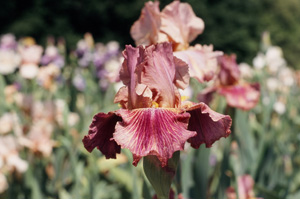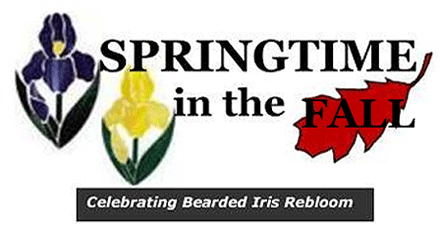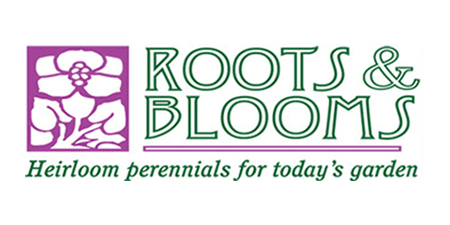
"Lockatell Seedling#20577"
(Northward Ho x Double Vision)
Reblooming bearded irises are not fool proof. Good yearly care insures healthy plants and consistent spring and fall bloom.
Heavy concentrations of mature rhizomes are a primary reason for poor bloom. A general rule is to divide overgrown iris clumps every three to four years depending on variety. A staggered digging schedule will always insure a portion of the iris garden will remain in flower each year.
July through early September is the optimal time to divide bearded irises. Medians should be dug and divided during the first half of September. Fall digging does not allow reset rhizomes to produce sufficient roots to remain anchored to the ground during winter. After the clump has been excavated, clinging soil should be removed and individual rhizomes separated by using a sharp knife or a pair of pruning shears. One half of the leaf surface can be removed. Cuts should be made towards the center of each fan at forty-five degree angles.
Divisions should be sterilized. Rhizomes are soaked in a ten percent chlorine bleach solution (12.8 oz. per gallon). Mix a two gallon solution and submerge the entire rhizome for ten minutes. The bleach solution should be rinsed off after treatment with clean tap water. Placing the rhizomes in a shady spot to dry completes the process.
Bearded irises prefer sunny locations and well-drained soils. Incorporating coarse grade builders sand improves drainage in heavy clay soils. Fine particle play sands are not recommended. A soil test before planting is helpful to establish proper pH and soil fertility requirements. Maintaining pH levels from 6.5 to 7.0 minimizes bacterial soft rot attacks. Calcitic lime is best due to low magnesium content. Low nitrogen complete fertilizers such as 5-10-5 or 5-10-10 should be applied after spring bloom in May. Organic sources of Phosphorous (P) and Potassium (K) through Rock Phosphate and Green Sand can be mixed in soil backfill at planting time for long-term nutrition.
Suggested rhizome spacing is eighteen inches or more to give a nice garden effect and discourage frequent division. Reblooming irises do not have a summer dormancy period. Watering should be pursued during dry periods to insure summer and fall flower. No daily watering.
Good garden sanitation negates disease and insect issues. Dead and diseased leaves should be removed throughout the growing season. A foliar spray of Merit® (Imidachlorprid) prior to spring bloom protects plants from iris borers and aphids. Sevin® is a contact insecticide useful in preventing mid summer and early fall foliar feeding from salt marsh caterpillar and armyworm. Crickets damage rhizome surfaces each summer. A light soil covering eliminates this problem.
Wet growing conditions result in fungal leaf spot outbreaks on foliage. The best chemical control measure is using Cleary’s Spectro 90™. Consult product label for usage rates and timing. Wet and high humidity periods cause bacterial soft rot attacks on healthy rhizomes. After removing affected tissue on rhizomes, anti-bacterial soap with Triclosan should be applied to cleaned surfaces.
Good cultural practice insures your iris planting will be the envy of any neighborhood garden.
Roots & Blooms, LLC, 500 Pantela Drive, North Chesterfield, VA www.springtimeinthefall.com

